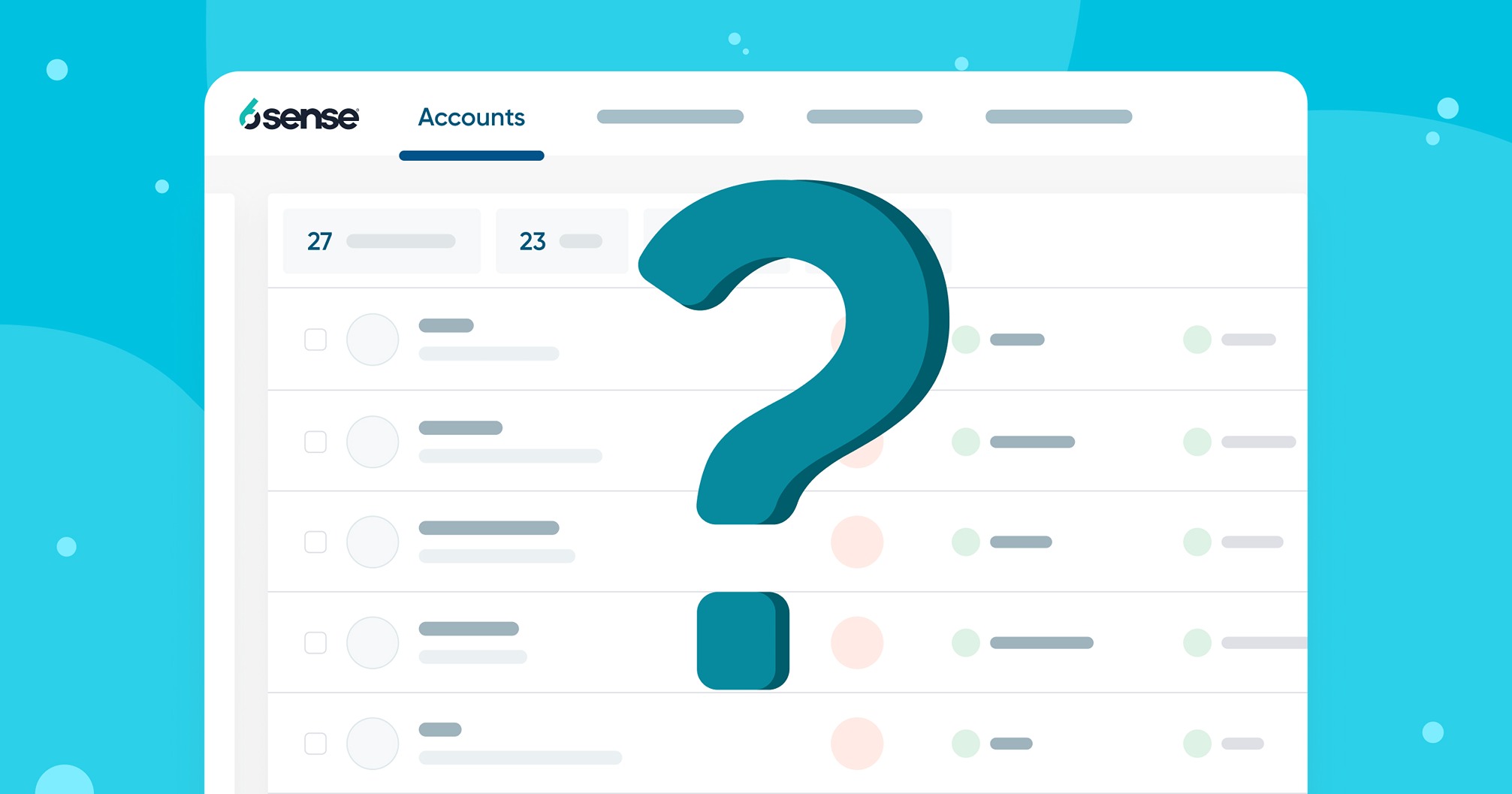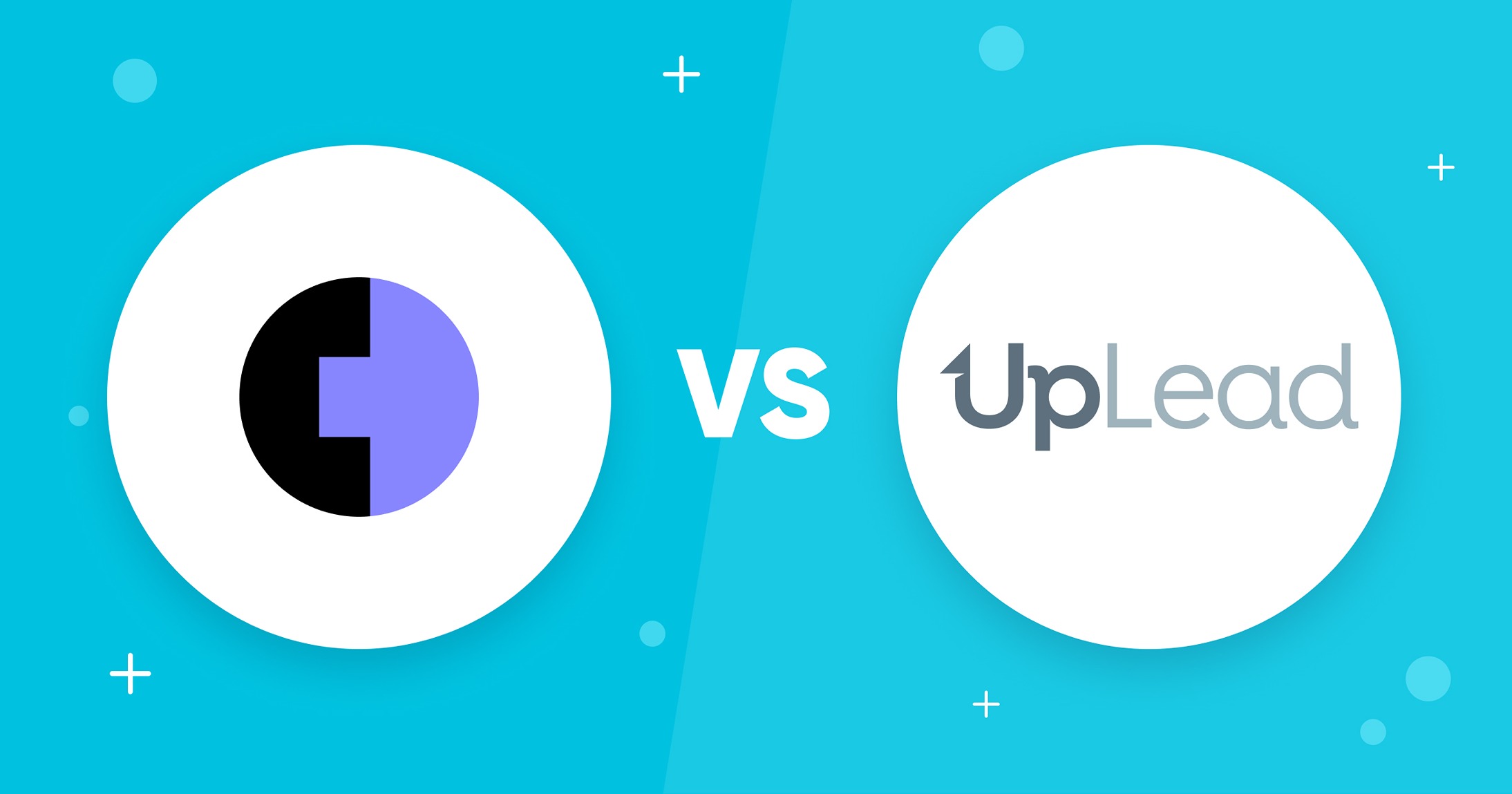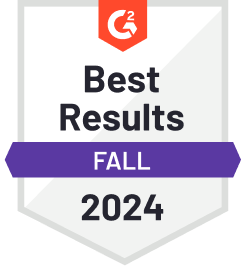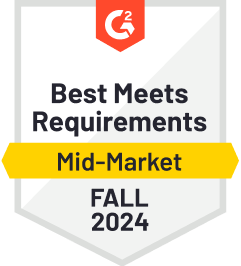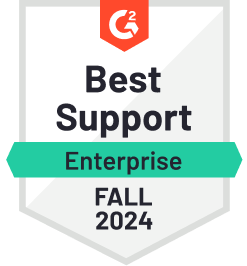As we wrap up 2023, adopting innovative and proven sales prospecting techniques becomes crucial to cutting through the noise and connecting with the right sales prospects. This comprehensive guide delves into 25 essential sales prospecting techniques that can transform your approach and yield remarkable results. From leveraging verified contacts and utilizing social proof to mastering the art of personalized outreach, these strategies enhance your prospecting efforts and drive sales success.
General Sales Prospecting Techniques
Sales prospecting is an indispensable component of the sales process, requiring a nuanced approach and a deep understanding of potential client’s needs and preferences. From understanding your customer profile to leveraging personalized templates and sequences, these strategies are designed to optimize your outreach and enhance your connection with potential leads.
Understand Your Customer Profile
Before contacting potential new customers, you must take the time to understand who your ideal customer is. Build a detailed client profile outlining your target customer’s demographics, challenges, goals, and behaviors. This outline will help craft messaging that truly resonates with their needs when you start prospecting. Spend time researching your existing customer base to uncover common patterns and traits. The more insights you have into your ideal customer profile, the more effective your outreach will be.
Suppose your target customers are small business owners in the technology sector. In that case, your client profile might include demographics like age (30-50 years), challenges (limited budget, need for scalable solutions), goals (business growth, technological advancement), and behaviors (active on LinkedIn, attends tech webinars). Researching your existing customer base, you might find that most first-time entrepreneurs value cost-effective, user-friendly solutions.
Make Use of Verified Contacts
One of the biggest wastes of time in B2B prospecting is reaching out to incorrect or outdated contact information. Save yourself frustration by only prospecting into verified, up-to-date contacts. This could involve purchasing a targeted prospecting list from a reputable provider or verifying connections manually through SDR tools like LinkedIn Sales Navigator or ZoomInfo. While buying verified contacts requires an upfront investment, it will significantly improve your prospecting results over cold calling unknown or unverified leads.
Nurture Qualified Leads
The key to successful prospecting isn’t just generating new leads – it’s identifying and nurturing qualified leads. As you build your pipeline across different types of leads, score your prospects based on needs, budget, timeline, and authority criteria. Then, customize your follow-up strategy based on lead quality. For colder leads, focus on educating and building awareness. For warmer leads, emphasize value and move them toward a sale. Setting up workflows and automation makes this tiered sales lead nurturing process more manageable for sales teams.
For a cold lead showing interest in your product, send educational emails about industry trends and your product’s role. For a warmer lead who has interacted with your content, send a personalized email highlighting specific features of your product that align with their expressed needs.
Lean Into Pain Points
One effective way to connect with prospects is to demonstrate that you understand their challenges and pain points. Highlight common frustrations and problems your ideal customers face. Show prospects you empathize with their issues through content like blogs, ebooks, and webinars. When prospecting, reference their specific pain points and how your solution addresses them.
For example, “I noticed on your website you mention struggling with X. We’ve helped companies like yours solve X by…” Lean into pain points to show relevance.
Provide Unmatched Value
When reaching out to prospects, you need to communicate the unique value your product or service can provide. Avoid generic claims and instead focus on tangible outcomes and results. High-performing sales professionals use case studies, ROI calculators, and free trials to demonstrate the differentiated value delivered through the product or service. In addition, back up claims with stats, testimonials, and guarantees. The more compellingly you can showcase your value, the more receptive prospects will be.
When presenting to a prospect, show a case study of a previous client who achieved an X% reduction in operational costs using your service. Include specific metrics and a testimonial from that client to strengthen your claim.
Leverage a Template or Script
Developing effective cold outreach messages from scratch can be challenging. Save time and optimize results by leveraging pre-made email templates, cold call scripts, and messaging frameworks. Start with templates, then customize with personal details on prospects. Scripts ensure consistency across outreach while allowing customization. Have separate sequences for cold versus warm leads. Templates and scripts boost productivity for sales reps and can make the sales cycle run much more smoothly.
Be Personal and Personable
Even when using templates, your outreach must be personal and human. Address potential customers by name and avoid over-generic language—research prospects on LinkedIn and social media to reference personal details and build connections.
Write conversationally, not formally. Ask questions to engage prospects and learn about their needs. Research shows personalized subject lines can improve open rates by up to 50%. Personalized outreach shows you care about more than just making a sale.
Start your email with, “Hi [Name], I came across your recent article on LinkedIn about [Topic], and it really resonated with me. In line with your thoughts, I believe our product could further enhance your team’s performance…”
Offer a Demo or Trial
Providing free demos, trials, or pilots removes risk for prospects while allowing you to showcase value directly. This gives prospects hands-on experience with your product to build interest and desire. Collect feedback during trials to improve positioning. Offer limited-time free trials to create urgency. Demos and trials get potential customers engaged and invested in your solution.
Don’t Be Afraid to Ask for Referrals
Referrals and introductions are some of the most effective sales prospecting techniques, especially in inside sales. After closing a deal, feel free to ask satisfied customers for introductions to others in their network, especially request referrals to accounts you want to break into. People are usually delighted to connect quality vendors with colleagues. Offer incentives for valuable referrals. Referrals accelerate growth by opening doors.
After a successful deal, ask your client, “We’re thrilled you’re finding value in our solution. Do you know anyone in your network who might benefit from our services? We’d love the opportunity to help them as well.”
Use Social Proof and Testimonies
A great way to boost conversion rates when prospecting is to showcase positive customer stories, reviews, and testimonials. Highlight specific examples of how you’ve solved challenges for existing customers like those you’re prospecting. Testimonials with metrics or data demonstrating ROI are particularly compelling. When reaching out cold, social proof builds credibility and establishes trust quickly. Include customer logos, quotes, and reviews from sites like Google on your website, emails, and sales collateral prominently.
Have a Strong Sequence to Convert
The key to lead nurturing is having a structured follow-up sequence. Send a series of emails, calls, and social touches over time to build relationships with prospects. Include educational content to establish authority. Vary contact methods, set reminders, and automate where possible to enhance sales team speed. Monitor engagement levels and adapt approaches. Consistent nurturing sequences convert more prospects into sales.
Design a sequence that starts with an introductory email, followed by a LinkedIn connection request, a second email with an educational blog post, a check-in call, and finally, an invitation to a webinar. Tailor the content to reflect the prospect’s industry and interests.
Sales Prospecting Techniques for Emailing
Email is one of the top channels for connecting with potential customers and driving the sales funnel. Used strategically, email prospecting can deliver excellent conversion rates and ROI. However, with crowded inboxes, it’s essential to optimize your outreach. Apply these techniques to get your prospecting emails opened, read, and generate responses.
Hone In On Your Subject Line
In a digital world brimming with emails, a prospect’s decision to open your message hinges heavily on the subject line. Crafting a sales email subject line that sparks curiosity is imperative. Integrate personalized elements such as the prospect’s name or company or address specific challenges they may face.
Engage them with questions or insightful advice, and incorporate impactful power words like “new,” “introducing,” or “free” while steering clear of potential spam triggers. Experiment with various cold email subject line formulas to discern what resonates most effectively with your target audience.
An example of a good subject line is: “John, Boost Your Team’s Efficiency with Our Cutting-Edge Tool.” A bad subject line is: “Buy Our Product Now for 50% Off!” Why the Difference? The good example uses the prospect’s name and addresses a potential need (efficiency), while the bad example is too pushy and sales-like, which might be flagged as spam.
Use Video in Your Emails
Including video links in emails is synonymous with heightened open and click-through rates. Consider embedding a thumbnail that links to a brief, personalized video introduction or a pitch highlighting your solution. Remember, authenticity trumps production value. Videos serve to differentiate your outreach and communicate with a dynamism that text alone cannot achieve. Aim for brevity, capping videos at a maximum of 1-2 minutes.
Avoid Being Overly Salesy
While the goal is to generate a pipeline, avoid aggressive sales language in cold emails. Overt selling will turn off many prospects initially. Instead, focus emails on being helpful, educating, and adding value. Establish credibility and trust before going into product specifics. Ask intelligent questions to learn about prospects’ needs. Avoid sounding robotic or generic. Write conversationally and show you understand their challenges.
An example of a sales approach is: “Our product is the best on the market, and you need to buy it now!” An example of an educative approach is: “I noticed your company focuses on sustainable growth. Here’s an article explaining how our eco-friendly solutions align with your goals.” The educative approach provides value and builds a connection without immediately pushing a sale.
Automate Your Sequence
Setting up automated workflows allows you to scale email sequencing without constant manual oversight. Build sequences tailored to lead source and profile. For example, recent site visitors get an initial email instantly and then follow-ups if they don’t respond. A cold email sequence automation ensures consistent execution of templated emails, but it’s crucial to customize individual messages with personal details.
Set up an automated email sequence where the first email is sent immediately after a prospect visits your website, the second email three days later if they haven’t responded, and a third email a week later with more detailed information about your product. Personalize each email based on the prospect’s interactions with your website.
Don’t Forget to Follow Up
It often takes multiple emails to get a response from prospects. Just one follow-up email can result in up to a 27% response rate, while emails with no follow-ups have a 16% response rate. Setting reminders to follow up at optimal intervals is important if initial emails receive no reply.
Change subject lines or content slightly with each follow-up while using follow-up email templates. Test if switching communication channels helps. Vary contact days/times. Persistence pays off – prospects need multiple touches before engaging. But know when to move on if there is no response after 5+ contacts.
Sales Prospecting Techniques for Cold Calling
While some view cold calling as outdated, it remains an effective tactic for outbound sales prospecting when executed strategically. Cold calling allows you to contact qualified prospects and start meaningful conversations directly. Apply these cold calling best practices to boost effectiveness:
Lean Into a Strong Script
Scripting cold calls reduces uncertainty and ensures consistency, which can be challenging to capture in a cold email. Create scripts tailored to sales prospect type and scenario: outline a concise intro, pain point reference, elevator pitch, and call-to-action. Sound natural versus robotic. Use scripts to guide calls but adapt based on prospect responses. Refine over time. Ensure sales reps practice with scripts to improve comfort levels.
Example of a Script: “Hello [Name], I’m [Your Name] from [Company]. I noticed your company is focusing on [pain point]. Our [product/service] has helped similar businesses by [specific benefit]. Can I quickly share how it might benefit you as well?”
Perfect the Elevator Pitch
Have a compelling 30-second elevator pitch highlighting your value proposition ready to use on a cold call list. Cold calling works when you summarize what you offer, key benefits, and differentiation crisply. Focus on piquing interest, not overwhelming with detail. Time the pitch to refine it. Ask colleagues to listen and improve it. When time is limited, the elevator pitch gives prospects a snapshot of your solution.
Example of an Elevator Pitch: “Hi, I’m [Your Name] with [Company]. We specialize in [product/service], which helps businesses like yours [key benefit]. Unlike others, we [unique selling proposition]. Can I explain how we might help you achieve [specific goal]?”
Leave Voicemails
Many cold calls go to voicemail. Structure effective voicemails that provide just enough information to entice a callback. Lead with a compelling hook based on their needs, then give a brief value statement. Wrap up with a clear CTA and contact details and keep it under 30 seconds. Leave your phone number twice and speak slowly. It’s also essential to personalize voicemails when possible and follow up on unreturned voicemails. Studies show that leaving a well-crafted voicemail can increase your response rate by up to 22%.
Example of a Voicemail: “Hi [Name], it’s [Your Name] from [Company]. I’m calling about [specific reason related to their business]. We’ve helped similar businesses [brief value statement]. Please call me back at [phone number] to discuss this further. Again, it’s [Your Name] from [Company], [phone number].”
Alternatively, you can also use the phone numbers for SMS outreach.
Sales Prospecting Techniques for Social Media
Social platforms like LinkedIn, X, and Facebook provide expansive opportunities to identify and connect with buyers. Integrate social outreach into your outbound prospecting strategy. Here are techniques high-performing sales professionals use to generate and qualify leads on social:
Network On Various Platforms
To maximize your reach and impact, establish a dynamic presence on critical professional networks like LinkedIn while tapping into niche communities pertinent to your industry. Engage in knowledge sharing and forge meaningful connections. Participate actively in relevant groups on LinkedIn and Facebook, and leverage Twitter for instantaneous interactions. Select platforms judiciously, ensuring alignment with your target audience’s preferences. Ensure your profiles on each platform are meticulously optimized to enhance visibility and credibility.
Identify Leaders on LinkedIn
Harness the capabilities of sales intelligence tools like LinkedIn Sales Navigator to pinpoint and connect with influential figures and decision-makers within your target accounts. Enhance your LinkedIn lead generation and receive notifications for critical activities of potential prospects.
Personalize your messages by highlighting shared connections or interests and actively engaging with their content when reaching out. Tailor your connection requests, especially when approaching executives and decision-makers, ensuring they resonate and stand out. Prioritize these pivotal contacts in your outreach strategy.
Answer Questions on Forums
Proactively participate in industry-specific forums such as Reddit and Quora, positioning yourself as a helpful and knowledgeable resource. Focus on providing insightful and thoughtful responses to common inquiries from potential buyers. Incorporate links to valuable resources, steering clear of overt sales pitches. Your active engagement in these forums underscores your commitment to the industry and enhances your reputation as an expert.
Showcase Your Authority and Expertise
Consistently disseminate valuable content and insights to underscore your expertise and authority in your field. Craft and share blog posts that delve into industry trends, best practices, and pertinent news events. Celebrate customer success stories and contribute articles to reputable publications. Embrace multimedia formats such as live videos, webinars, and podcasts to diversify your content and reach. Strive to become a respected and trusted voice within your industry.
Check Out Competitors
Conduct thorough research on your competitors’ social profiles to identify prospects already expressing interest in similar offerings. Engage with these potential leads by interacting with their posts and demonstrating your solutions’ unique value and differentiators. Focus on creating genuine connections rather than direct sales pitches.
Find (And Attend) Industry Events
Discover relevant industry networking events, conferences, and seminars and use social media to connect with fellow attendees. Engage with event-related posts, join associated LinkedIn Groups, and actively participate in event discussions using designated hashtags. If possible, attend events in person to solidify connections further. Post-event, follow up with new contacts made through social channels to nurture those relationships. Events are invaluable networking platforms, providing opportunities to expand your professional network and uncover potential leads.
UpLead Helps Simplify Sales Prospecting
UpLead offers an all-in-one sales engagement platform designed to simplify and enhance prospecting. Key features include over 95% data accuracy guaranteed, CRM integration, SMS outreach, over 16,000 technologies tracked, and more. UpLead centralizes data and automates repetitive tasks to help sales reps prospect smarter. Built-in analytics provide insights to refine strategies.
UpLead integrates with your existing CRM and sales tech stack for maximum productivity. The platform enables consistent execution at scale while allowing for personalization. Sign up for a free trial to experience how UpLead makes sales prospecting faster, more innovative, and more effective for your sales team.
Lead generation doesn’t have to be all that painful. With UpLead, you can easily connect with high-quality prospects and leads to grow your company.
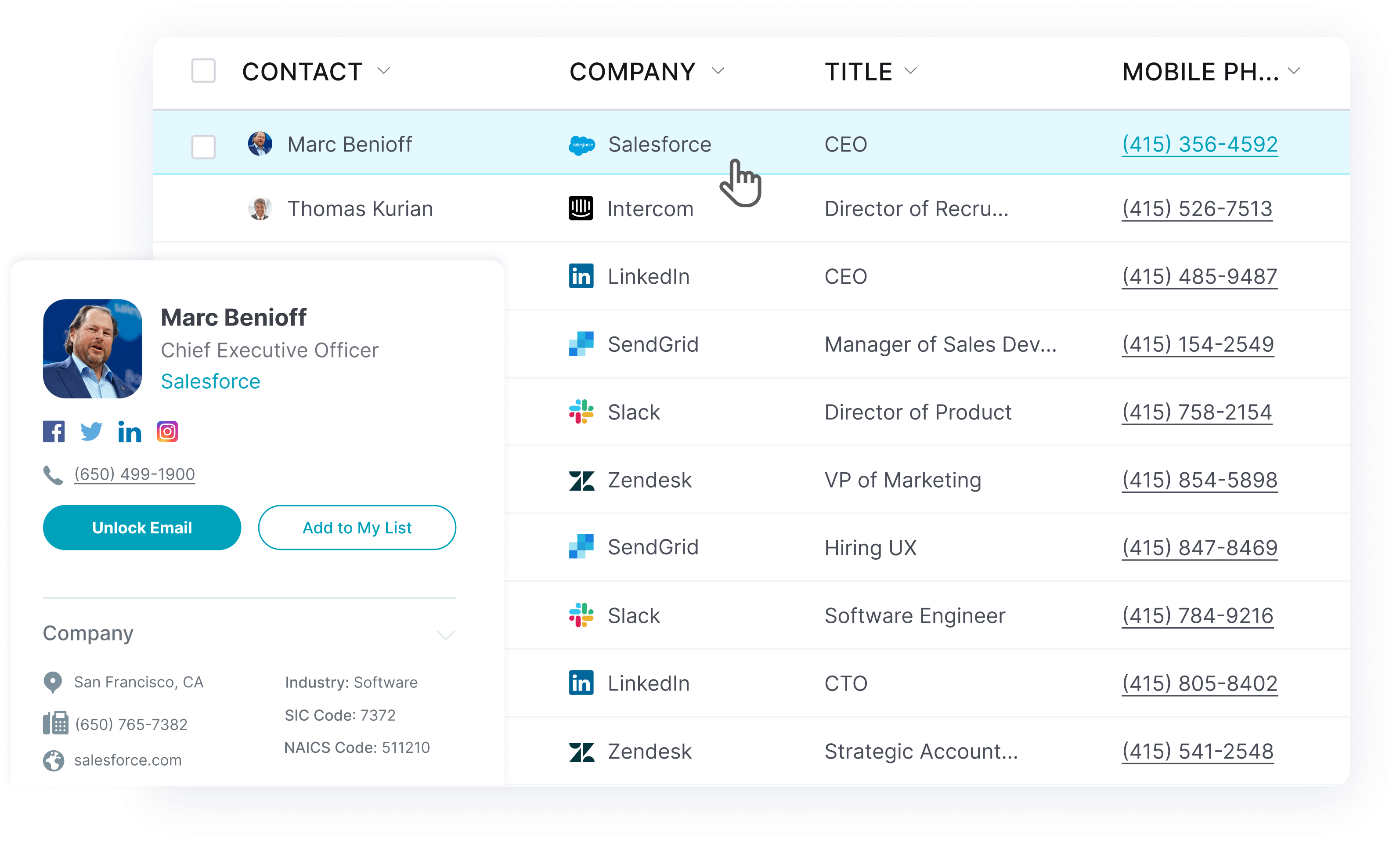
FAQs About Sales Prospecting Techniques
Effective sales prospecting is crucial for driving new pipelines and revenue. Here are answers to some frequently asked questions:
Sales prospecting encompasses a variety of methods, such as cold calling, email outreach, leveraging social media, utilizing advertisements, participating in events, and harnessing the power of referrals. Each channel has its unique set of best practices and nuances. For instance, email outreach requires compelling subject lines and personalized content, while social media prospecting demands an active presence and engagement. Understanding each method’s strengths and optimal use can significantly enhance your prospecting and marketing efforts.
Effective sales prospecting methods can vary based on your industry, target audience, and personal expertise. However, a holistic, multi-channel approach combining email, phone calls, social media engagement, referrals, and other tactics yields the most robust results. It’s crucial to understand and respect the preferences of your potential buyers and tailor your tactics accordingly, ensuring a personalized and impactful outreach.
Enhancing your sales prospecting skills is a continuous journey that involves consistent practice, ongoing testing, meticulous analysis, and thoughtful refinement. Learning from both successes and failures provides invaluable insights for your sales process. Leveraging templates and automation tools can streamline your sales cycle, but it’s vital to strike a balance by ensuring personalization and a genuine touch in your communications. Focus on creating value for your sales prospects and establishing trust, cornerstones of successful prospecting.
In 2023, sales prospecting demands a strategic blend of traditional methods and innovative digital tactics. Given the pervasive use of smartphones and social media, ensuring your outreach is mobile-friendly and incorporates social platforms is imperative. Instead of hard selling, prioritize educating your prospects and providing them with the resources and information they need to make informed decisions. Adopting a helpful and consultative approach is critical to resonating with modern buyers and standing out in a crowded market.
What You Need to Remember About Sales Prospecting Techniques
Mastering sales prospecting techniques is essential for any sales professional looking to enhance their sales pipeline and boost revenue. Remember, personalization, consistency, and value addition are vital components in any prospecting endeavor. Platforms like UpLead can significantly streamline and enhance your prospecting efforts, ensuring you have the tools and data at your fingertips. With continuous testing, refinement, and a strategic approach, your sales prospecting can yield impressive results, driving growth and success in your sales and marketing efforts.

